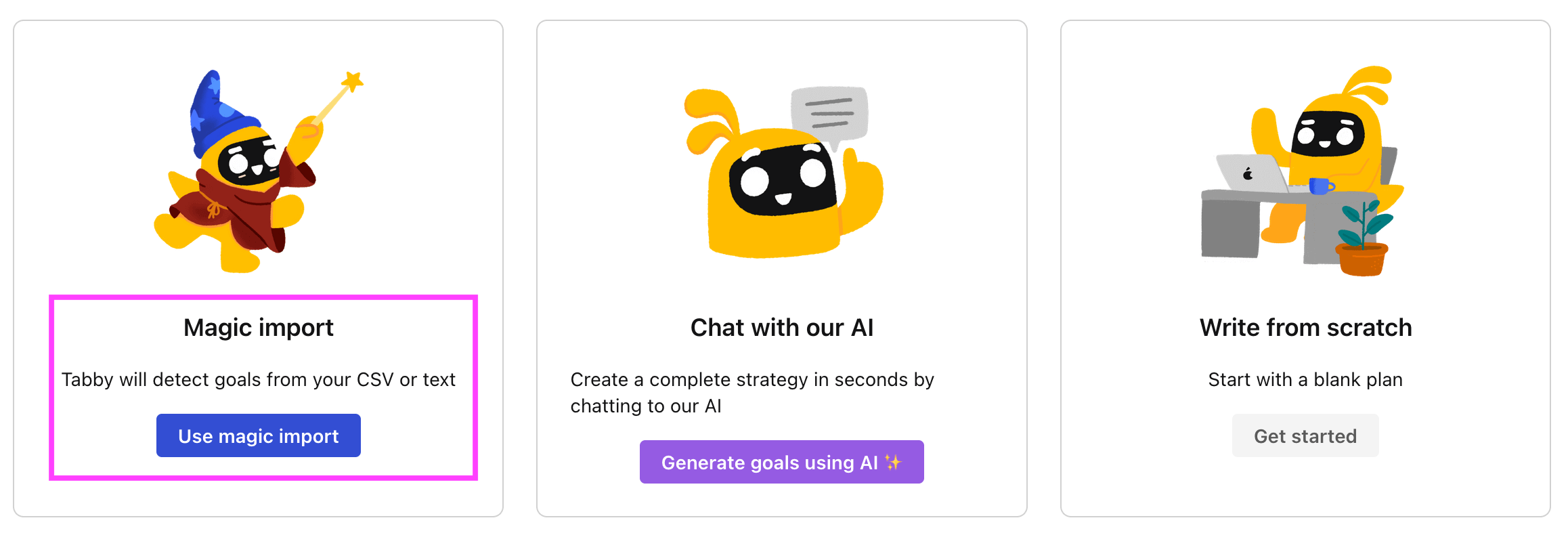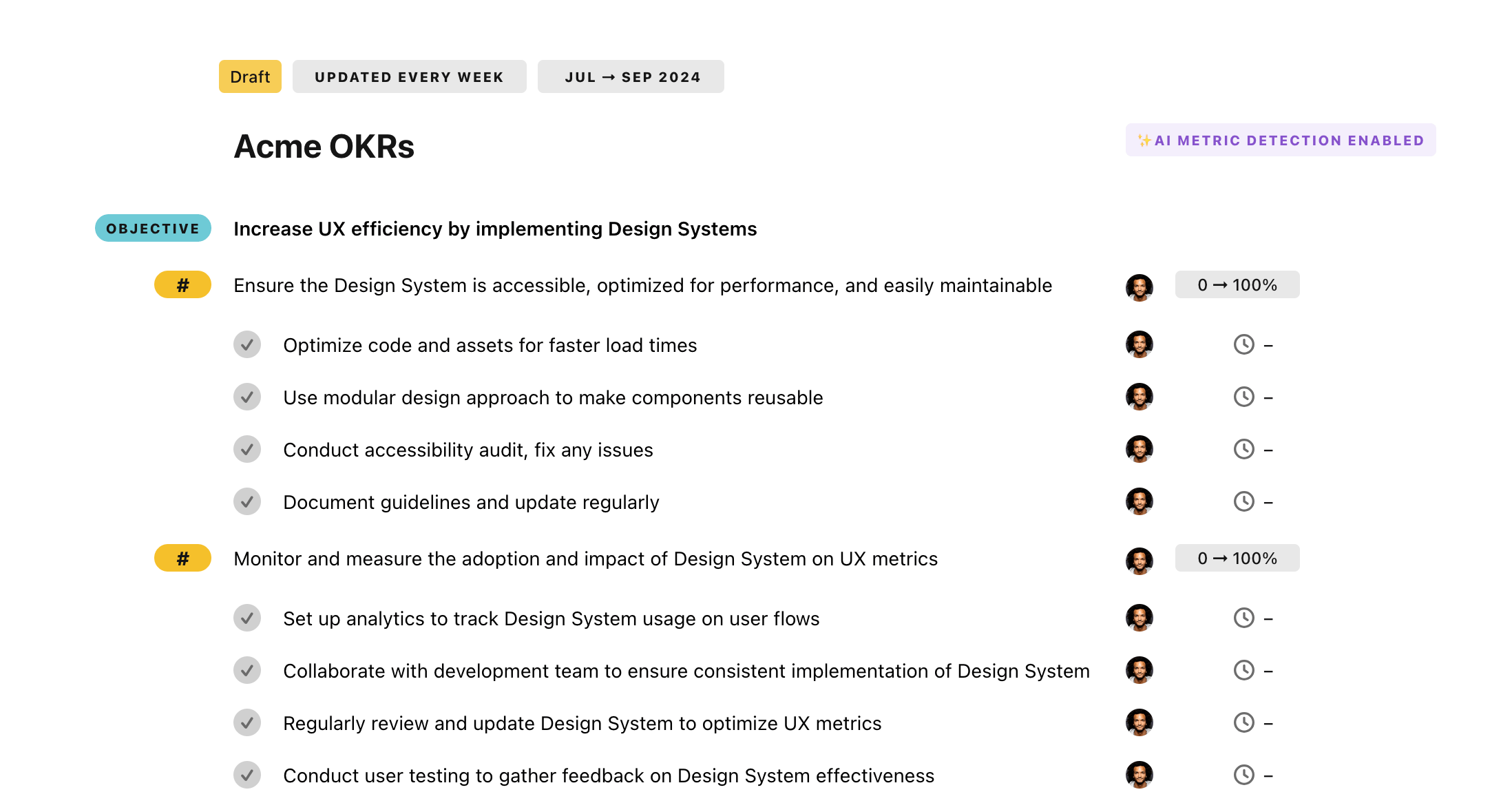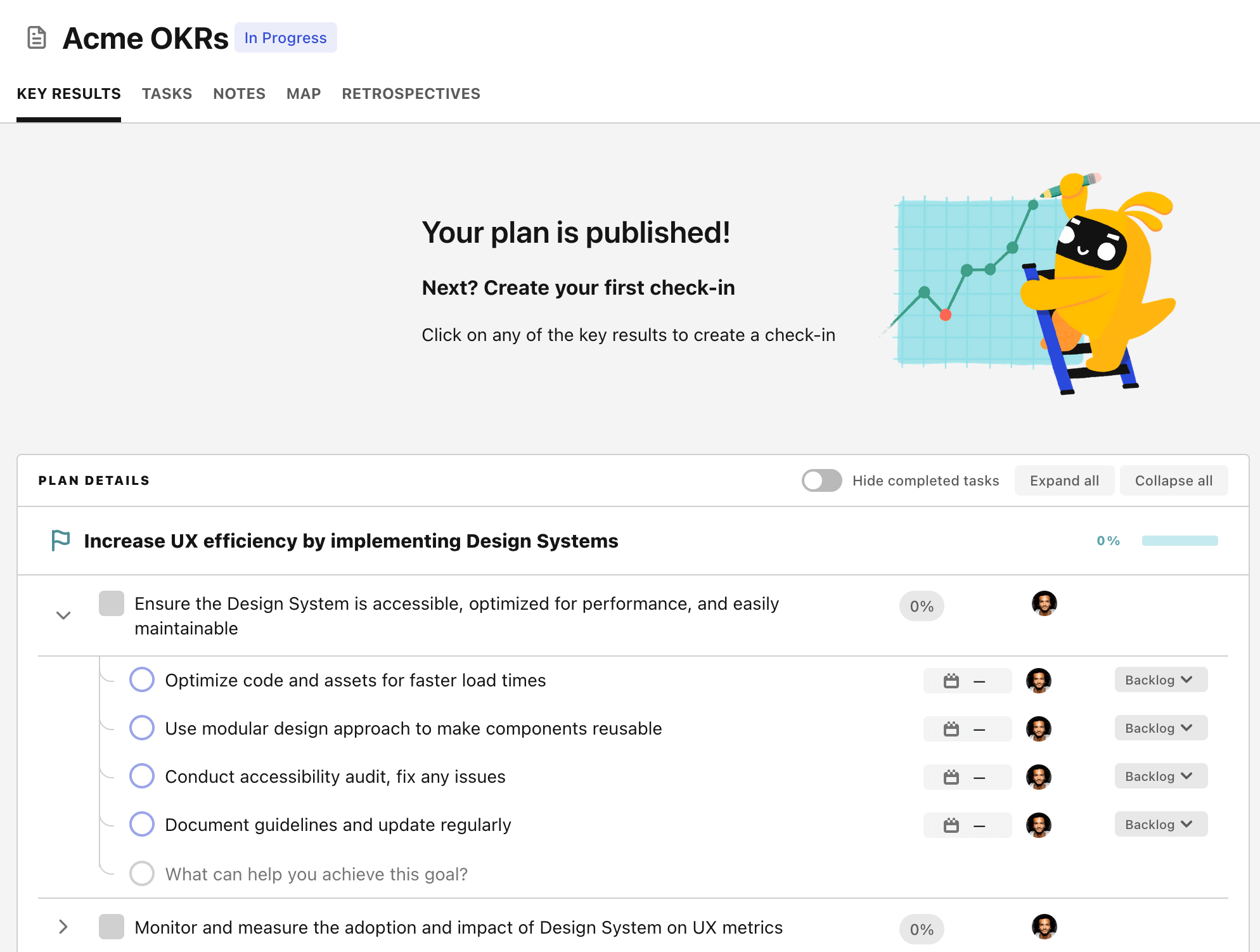OKR template to improve ATM uptime by ensuring sustainable power supplies
Your OKR template
The second part of this OKR aims at hitting 95% operational efficiency on ATMs by incorporating solar power solutions. Actions encompass implementing and monitoring solar power solutions in ATMs, allocating finances for solar power amalgamation in ATMs, and researching reliable solar power solution providers.
Lastly, following the second objective, the agenda is to ensure that 100% of the operations team receive training regarding power sustainability measures and management. The initiatives here will consist of formulating a training program on power sustainability measures, scheduling the training sessions for the team, and monitoring and assessing the team's application of the program.
This OKR will ensure the ATMs are operational even during times of power disruption. This will thus result in the maximization of ATM uptime, customer satisfaction, and the firm's productivity.
ObjectiveImprove ATM uptime by ensuring sustainable power supplies
KRImplement backup power systems in 70% of ATMs to reduce downtime by 40%
Source suitable backup power systems
Assess current power system of all ATMs
Install backup power system in 70% of ATMs
KRAchieve 95% ATM operational efficiency by integrating solar power solutions
Implement and monitor solar power solutions into ATMs
Allocate funds for solar power integration in ATMs
Research credible solar power solution providers for ATMs
KRTrain 100% of operations team on power sustainability measures and management
Develop training program on power sustainability measures
Schedule training sessions for operations team
Monitor and evaluate team's application of training
How to edit and track OKRs with Tability
You'll probably want to edit the examples in this post, and Tability is the perfect tool for it.
Tability is an AI-powered platform that helps teams set better goals, monitor execution, and get help to achieve their objectives faster.
With Tability you can:
- Use AI to draft a complete set of OKRs in seconds
- Connect your OKRs and team goals to your project
- Automate reporting with integrations and built-in dashboard
Instead of having to copy the content of the OKR examples in a doc or spreadsheet, you can use Tability’s magic importer to start using any of the examples in this page.
The import process can be done in seconds, allowing you to edit OKRs directly in a platform that knows how to manage and track goals.
Step 1. Sign up for a free Tability account
Go tohttps://tability.app/signup and create your account (it's free!)
Step 2. Create a plan
Follow the steps after your onboarding to create your first plan, you should get to a page that looks like the picture below.

Step 3. Use the magic importer
Click on Use magic import to open up the Magic Import modal.
Now, go back to the OKR examples, and click on Copy on the example that you’d like to use.

Paste the content in the text import section. Don’t worry about the formatting, Tability’s AI will be able to parse it!

Now, just click on Import from text and let the magic happen.

Once your example is in the plan editor, you will be able to:
- Edit the objectives, key results, and tasks
- Click on the target 0 → 100% to set better target
- Use the tips and the AI to refine your goals
Step 4. Publish your plan
Once you’re done editing, you can publish your plan to switch to the goal-tracking mode.

From there you will have access to all the features that will help you and your team save hours with OKR reporting.
- 10+ built-in dashboards to visualise progress on your goals
- Weekly reminders, data connectors, and smart notifications
- 9 views to map OKRs to strategic projects
- Strategy map to align teams at scale